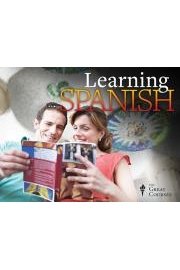





























Learning Spanish: How to Understand and Speak a New Language is a comprehensive language course offered by The Great Courses Signature Collection. This course covers all aspects of the Spanish language, including grammar, vocabulary, and pronunciation, with the goal of helping students achieve basic to intermediate proficiency in the language.
The course is taught by Professor Bill Worden, who has over 20 years of experience teaching Spanish at the college level. With his engaging teaching style and focus on practical communication skills, Professor Worden makes learning Spanish enjoyable and accessible for students of all backgrounds and skill levels.
The course is divided into 30 lectures, each around half an hour long, making it easy for students to fit language learning into their busy schedules. The first few lectures introduce the basics of Spanish pronunciation, while later lectures cover more complex topics such as verb conjugation and sentence structure. Throughout the course, Professor Worden emphasizes the importance of speaking and practicing the language in order to improve.
One of the unique features of this course is its focus on Spanish as it is spoken in Latin America, rather than Spain. Professor Worden explains the differences between Latin American Spanish and Spanish from Spain, and provides students with the tools to communicate effectively in a variety of Spanish-speaking environments.
In addition to the lectures, the course also includes interactive exercises and quizzes to help reinforce learning. The course workbook includes practice exercises, review questions, and a glossary of terms, making it a valuable resource for independent study.
Overall, Learning Spanish: How to Understand and Speak a New Language is a highly effective language course that will help students gain confidence and proficiency in speaking Spanish. Whether you are learning Spanish for travel, work, or personal enrichment, this course provides a solid foundation for mastering the language.
Learning Spanish: How to Understand and Speak a New Language is a series that ran for 1 seasons (30 episodes) between December 11, 2015 and on The Great Courses Signature Collection
-
Channel
-
Premiere DateDecember 11, 2015

































